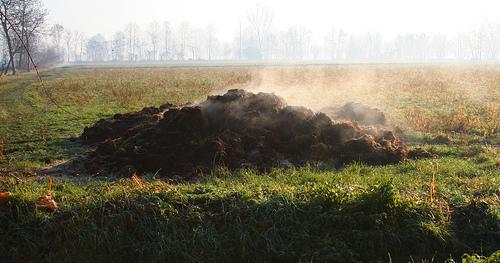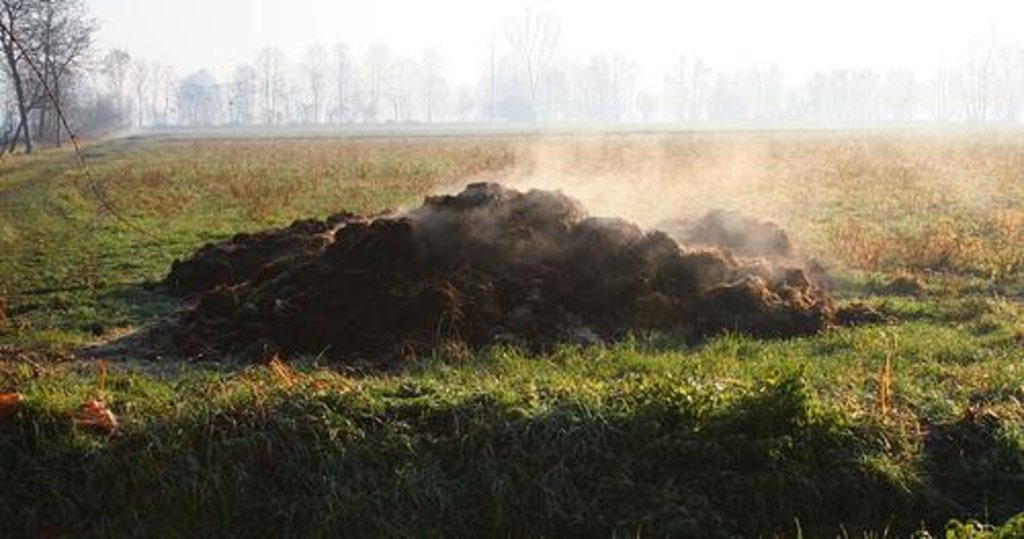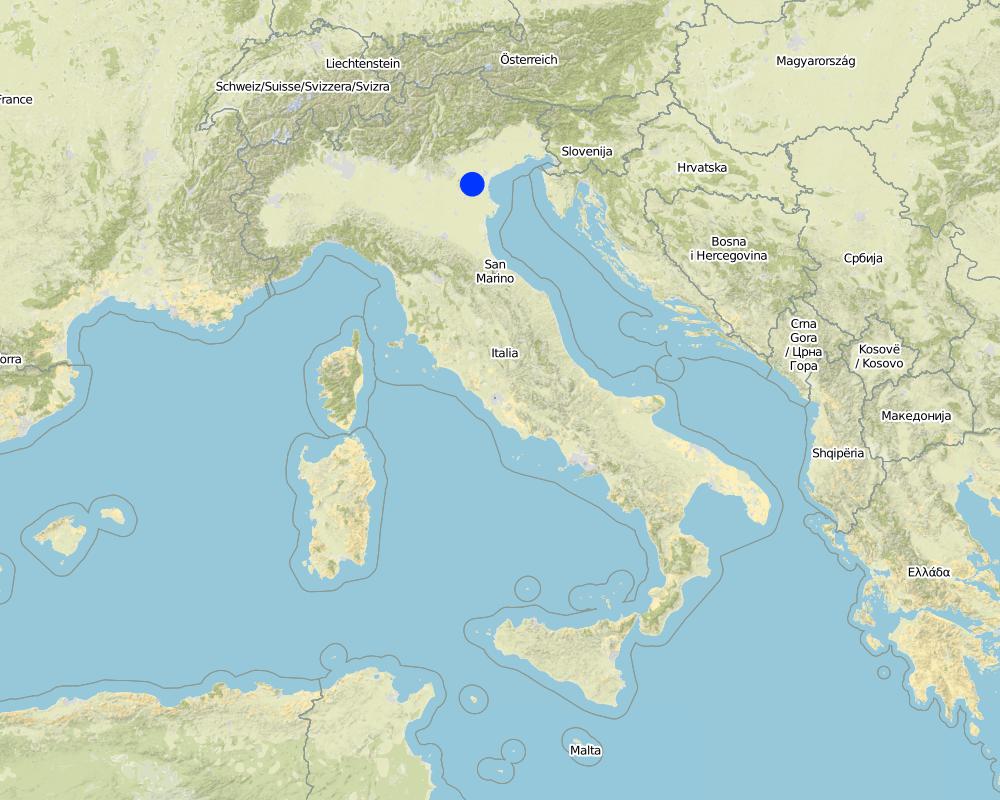Re-introduction of organic amendments in croplands [意大利]
- 创建:
- 更新:
- 编制者: Nicola Dal Ferro
- 编辑者: –
- 审查者: Fabian Ottiger, Alexandra Gavilano
Re-introduzione di ammendanti organici
technologies_1280 - 意大利
查看章节
全部展开 全部收起1. 一般信息
1.2 参与该技术评估和文件编制的资源人员和机构的联系方式
SLM专业人员:
Morari Francesco
University of Padova
意大利
有助于对技术进行记录/评估的项目名称(如相关)
Preventing and Remediating degradation of soils in Europe through Land Care (EU-RECARE )有助于对技术进行记录/评估的机构名称(如相关)
University of Padova (UNIPD) - 意大利1.3 关于使用通过WOCAT记录的数据的条件
编制者和关键资源人员接受有关使用通过WOCAT记录数据的条件。:
是
1.5 参考关于SLM方法(使用WOCAT记录的SLM方法)的调查问卷
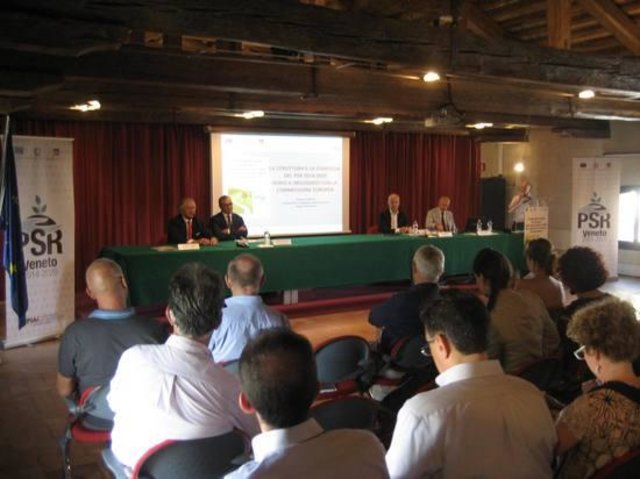
Rural development programme in the Veneto region [意大利]
Developing rural areas in the Veneto region through sustainable land management policies
- 编制者: Nicola Dal Ferro
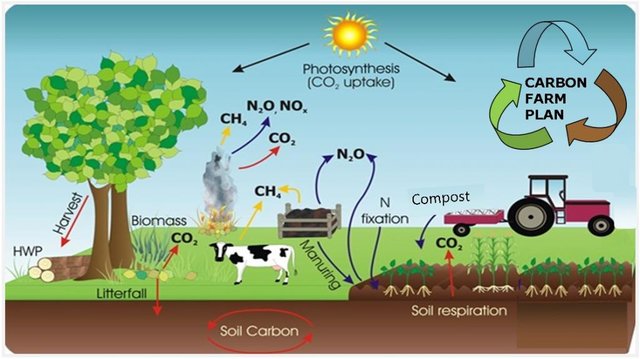
Carbon farming [意大利]
Managing land, water, plants and animals to meet the landscape restoration, climate change and food security.
- 编制者: Nicola Dal Ferro
2. SLM技术的说明
2.1 技术简介
技术定义:
Re-introduction of biosolids to improve fertility of mineral soils
2.2 技术的详细说明
说明:
Since 1960, organic amendments in Italy have been the unique source of nutrients for croplands. Only in the last fifty years, mineral inputs (e.g. nitrogen, phosphorus) have achieved great importance to supply the increasing nutrient needs of cropping systems, although their use do not replace the whole benefits that organic matter provides to the crops and the soil.
Purpose of the Technology: The re-introduction of organic amendments as a fertilisation management strategy is therefore promoted to increase the soil quality and reduce the loss of organic matter, especially in mineral soils. Therefore in Veneto region it was adopted as an agri-environmental measure of the Rural Development Programme (RDP) 2007-2013 to extend sustainable land management.
Establishment / maintenance activities and inputs: The agricultural production in the Veneto region is somehow divided between a flat area upstream (northern plain), where breeding is a very important agricultural activity and a flat area downstream (southern plain), where most of the grain and soybean production is concentrated. In this context, the low economic value given to organic amendments makes it difficult to move manure for north to south. As a result, the RDP finaced the use of organic inputs throughout the agricultural lands, especially favouring the re-introduction of organic amendments in mineral soils with low organic matter cointent.
Natural / human environment: The soil will benefit from organic amendments input. Particularly, high soil organic matter content will improve nutrient cycling and availability, soil water storage capacity, soil structure stability and finally crop productivity. From an environmental point of view, using organic amenedments istead of mineral inputs as a fertilization strategy will improve the carbon cycle by reducing GHG emissions to the atmosphere and increasing the soil organic carbon (SOC) content.
2.3 技术照片
2.5 已应用该技术的、本评估所涵盖的国家/地区/地点
国家:
意大利
区域/州/省:
Veneto region
有关地点的进一步说明:
Low venetian plain of Veneto region
具体说明该技术的分布:
- 均匀地分布在一个区域
如果不知道精确的区域,请注明大致覆盖的区域:
- 1,000-10,000 平方千米
Map
×2.7 技术介绍
详细说明该技术是如何引入的:
- 通过项目/外部干预
3. SLM技术的分类
3.2 应用该技术的当前土地利用类型

农田
- 一年一作
每年的生长季节数:
- 1
具体说明:
Longest growing period in days: 210Longest growing period from month to month: March to OctoberSecond longest growing period in days: 180
注释:
Major land use problems (compiler’s opinion): Soils in the low Venetian plain of the Veneto region generally suffer from a loss of soil organic matter (SOM) that is strongly affected by their natural texture and climatic conditions. Moreover, in the last 50 years intensive tillage practices contributed to a further SOM decrease, estimated at 0.02-0.58 t/ha/y of carbon.
Major land use problems (land users’ perception): Decrease of productivity, soil compaction. To date, few farmers has adopted voluntarily conservation practices to reduce a decline of soil fertility and SOM content, symptom of poor perception of the problem. Moreover, the low technical know-how causes low yield performances and discouraged farmers to adopt the SLT.
3.4 供水
该技术所应用土地的供水:
- 混合雨水灌溉
3.5 该技术所属的SLM组
- 土壤肥力综合管理
3.6 包含该技术的可持续土地管理措施

农艺措施
- A2:有机质/土壤肥力
注释:
Main measures: agronomic measures
Type of agronomic measures: manure / compost / residues
3.7 该技术强调的主要土地退化类型

化学性土壤退化
- Cn:肥力下降和有机质含量下降(非侵蚀所致)

生物性退化
- Bh:栖息地丧失
注释:
Main type of degradation addressed: Cn: fertility decline and reduced organic matter content
Secondary types of degradation addressed: Bh: loss of habitats
Main causes of degradation: soil management, population pressure
3.8 防止、减少或恢复土地退化
具体数量名该技术与土地退化有关的目标:
- 防止土地退化
- 减少土地退化
注释:
Secondary goals: rehabilitation / reclamation of denuded land
4. 技术规范、实施活动、投入和成本
4.1 该技术的技术图纸
技术规范(与技术图纸相关):
Technical knowledge required for field staff / advisors: low
Technical knowledge required for land users: low
Main technical functions: increase in organic matter
Secondary technical functions: improvement of subsoil structure (hardpan), increase / maintain water stored in soil
Manure / compost / residues
Material/ species: Farmyard manure
Quantity/ density: 30 t/ha
4.2 有关投入和成本计算的一般信息
其它/国家货币(具体说明):
€
如相关,注明美元与当地货币的汇率(例如1美元=79.9巴西雷亚尔):1美元=:
0.8
注明雇用劳工的每日平均工资成本:
21.00
4.5 维护/经常性活动
| 活动 | 时间/频率 | |
|---|---|---|
| 1. | Purchase and distribution of manure | 1/year |
4.6 维护/经常性活动所需要的费用和投入(每年)
| 对投入进行具体说明 | 单位 | 数量 | 单位成本 | 每项投入的总成本 | 土地使用者承担的成本% | |
|---|---|---|---|---|---|---|
| 劳动力 | Purchase and distribution of manure | t/ha | 30.0 | 5.6 | 168.0 | 15.0 |
| 技术维护所需总成本 | 168.0 | |||||
| 技术维护总成本,美元 | 210.0 | |||||
4.7 影响成本的最重要因素
描述影响成本的最决定性因素:
Moving large amounts of organic amendments of low economic value, where required. Estimated costs consist of material transportation and distribution.
5. 自然和人文环境
5.1 气候
年降雨量
- < 250毫米
- 251-500毫米
- 501-750毫米
- 751-1,000毫米
- 1,001-1,500毫米
- 1,501-2,000毫米
- 2,001-3,000毫米
- 3,001-4,000毫米
- > 4,000毫米
农业气候带
- 半湿润
Thermal climate class: temperate
5.2 地形
平均坡度:
- 水平(0-2%)
- 缓降(3-5%)
- 平缓(6-10%)
- 滚坡(11-15%)
- 崎岖(16-30%)
- 陡峭(31-60%)
- 非常陡峭(>60%)
地形:
- 高原/平原
- 山脊
- 山坡
- 山地斜坡
- 麓坡
- 谷底
垂直分布带:
- 0-100 m a.s.l.
- 101-500 m a.s.l.
- 501-1,000 m a.s.l.
- 1,001-1,500 m a.s.l.
- 1,501-2,000 m a.s.l.
- 2,001-2,500 m a.s.l.
- 2,501-3,000 m a.s.l.
- 3,001-4,000 m a.s.l.
- > 4,000 m a.s.l.
5.3 土壤
平均土层深度:
- 非常浅(0-20厘米)
- 浅(21-50厘米)
- 中等深度(51-80厘米)
- 深(81-120厘米)
- 非常深(> 120厘米)
土壤质地(表土):
- 中粒(壤土、粉土)
表土有机质:
- 中(1-3%)
如有可能,附上完整的土壤描述或具体说明可用的信息,例如土壤类型、土壤酸碱度、阳离子交换能力、氮、盐度等。:
Soil fertility is low
Soil drainage/infiltration is medium
Soil water storage capacity is medium
5.4 水资源可用性和质量
地下水位表:
< 5米
地表水的可用性:
好
水质(未处理):
良好饮用水
5.5 生物多样性
物种多样性:
- 中等
5.6 应用该技术的土地使用者的特征
生产系统的市场定位:
- 商业/市场
相对财富水平:
- 平均水平
个人或集体:
- 个人/家庭
机械化水平:
- 机械化/电动
说明土地使用者的其他有关特征:
Land users applying the Technology are mainly common / average land users
Population density: 200-500 persons/km2
Annual population growth: 0.5% - 1%
Off-farm income specification: It is assumed that this technology is spread throughout the agricultural sector,therefore it is not possible to define an average off-far income.
5.7 应用该技术的土地使用者使用的平均土地面积
- < 0.5 公顷
- 0.5-1 公顷
- 1-2 公顷
- 2-5公顷
- 5-15公顷
- 15-50公顷
- 50-100公顷
- 100-500公顷
- 500-1,000公顷
- 1,000-10,000公顷
- > 10,000公顷
这被认为是小规模、中规模还是大规模的(参照当地实际情况)?:
- 中等规模的
5.8 土地所有权、土地使用权和水使用权
土地所有权:
- 个人,未命名
土地使用权:
- 租赁
- 个人
用水权:
- 社区(有组织)
- 租赁
5.9 进入服务和基础设施的通道
健康:
- 贫瘠
- 适度的
- 好
教育:
- 贫瘠
- 适度的
- 好
技术援助:
- 贫瘠
- 适度的
- 好
就业(例如非农):
- 贫瘠
- 适度的
- 好
市场:
- 贫瘠
- 适度的
- 好
能源:
- 贫瘠
- 适度的
- 好
道路和交通:
- 贫瘠
- 适度的
- 好
饮用水和卫生设施:
- 贫瘠
- 适度的
- 好
金融服务:
- 贫瘠
- 适度的
- 好
6. 影响和结论性说明
6.1 该技术的现场影响
社会经济效应
生产
作物生产
生产故障风险
社会文化影响
娱乐机会
SLM/土地退化知识
冲突缓解
Improved livelihoods and human well-being
注释/具体说明:
By favouring more sustainable land management practices.
生态影响
土壤
土壤流失
土壤有机物/地下C
6.2 该技术的场外影响已经显现
缓冲/过滤能力
6.3 技术对渐变气候以及与气候相关的极端情况/灾害的暴露和敏感性(土地使用者认为的极端情况/灾害)
渐变气候
渐变气候
| 季节 | 增加或减少 | 该技术是如何应对的? | |
|---|---|---|---|
| 年温度 | 增加 | 不好 |
6.4 成本效益分析
技术收益与技术建立成本相比如何(从土地使用者的角度看)?
短期回报:
积极
长期回报:
积极
技术收益与技术维护成本/经常性成本相比如何(从土地使用者的角度看)?
短期回报:
积极
长期回报:
积极
6.5 技术采用
注释:
Comments on acceptance with external material support: The technology was adopted by farmers who did not reduce their incomes as a consequence of its application
Comments on spontaneous adoption: Farmers with livestock partly adopt the technology voluntarily
There is no trend towards spontaneous adoption of the Technology
6.7 该技术的优点/长处/机会
| 土地使用者眼中的长处/优势/机会 |
|---|
| Improves soil fertility |
| 编制者或其他关键资源人员认为的长处/优势/机会 |
|---|
|
Enhances distribution of organic amendments throughout the whole region How can they be sustained / enhanced? Favouring the reconversion from liquid to farmyard manure |
| Promotes knowledge between partners |
6.8 技术的弱点/缺点/风险及其克服方法
| 土地使用者认为的弱点/缺点/风险 | 如何克服它们? |
|---|---|
| Costs for transport and distribution of large amiunts of material with low economic value | More subsidies |
| Promoting knowledge between partners |
| 编制者或其他关键资源人员认为的弱点/缺点/风险 | 如何克服它们? |
|---|---|
| High doses can increase diffuse pollution |
7. 参考和链接
7.1 信息的方法/来源
7.2 参考可用出版物
标题、作者、年份、ISBN:
Programma di sviluppo rurale per il veneto 2007-2013, Regione Veneto, 2007. Dipartimento Agricoltura e Sviluppo Rurale.
链接和模块
全部展开 全部收起链接

Rural development programme in the Veneto region [意大利]
Developing rural areas in the Veneto region through sustainable land management policies
- 编制者: Nicola Dal Ferro

Carbon farming [意大利]
Managing land, water, plants and animals to meet the landscape restoration, climate change and food security.
- 编制者: Nicola Dal Ferro
模块
无模块


